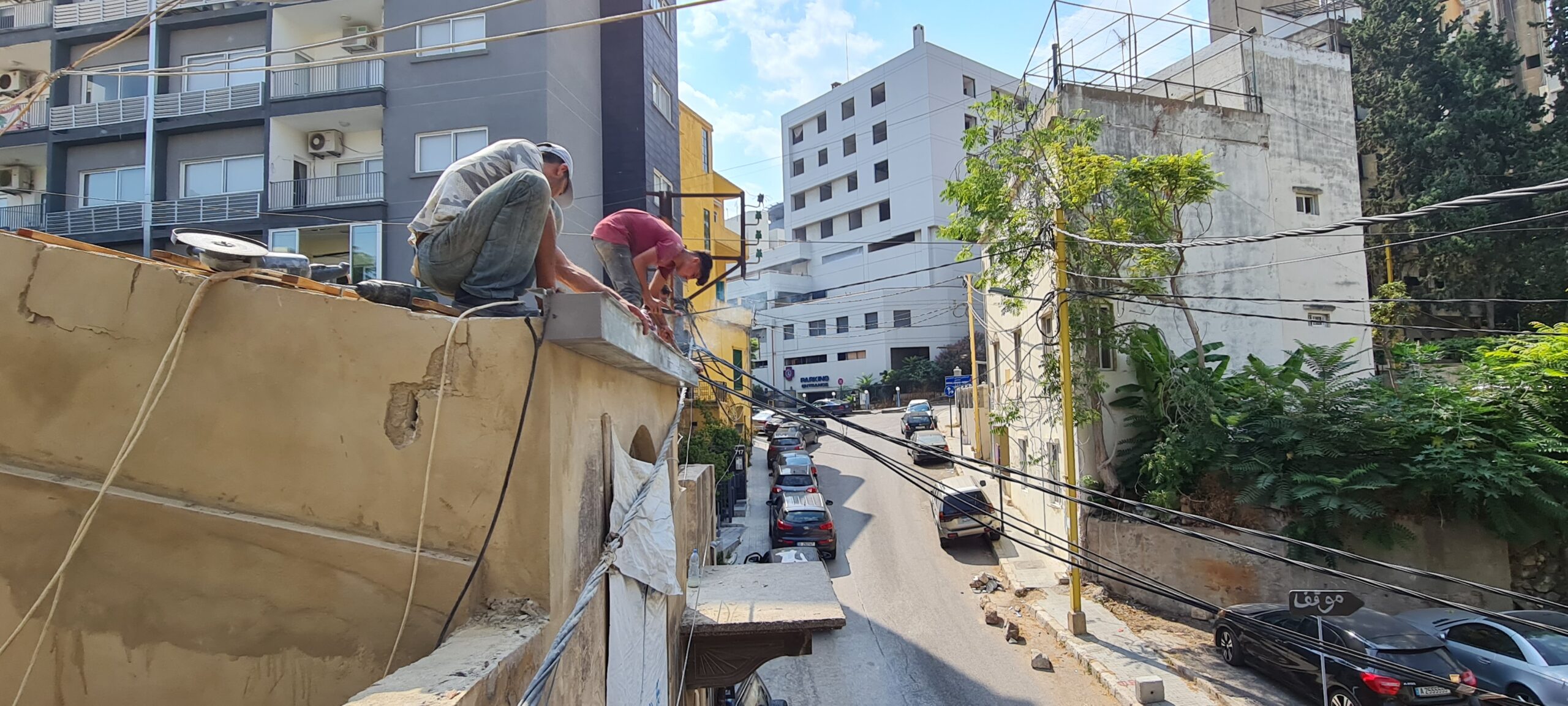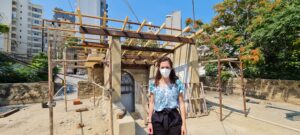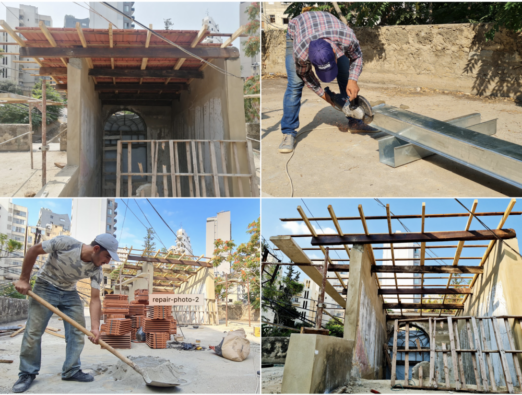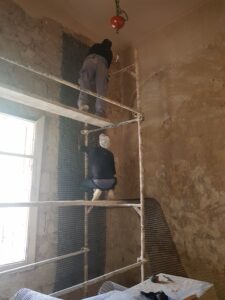Miyamoto Global Disaster Relief

Repairing Damaged Homes in Beirut, Lebanon: A Collaboration Between the Center for Disaster Philanthropy and Miyamoto Relief
This story also appeared on Miyamoto Relief’s website.
On Aug. 4, 2020, there was a deadly explosion in Beirut, Lebanon caused by the inadequate storage of 2,750 tons of ammonium nitrate in the Port of Beirut. The explosion resulted in 217 deaths, 6,500 people injured, and an estimated 300,000 people homeless. At least 8,000 buildings were damaged, of which at least 640 were cultural heritage buildings.
Repairs to historical buildings require specific skills because of the materials and techniques used. Miyamoto Global Disaster Relief (Miyamoto Relief) is one of a few nonprofits that possesses the technical know-how to implement these targeted repairs in buildings of cultural heritage. With generous funding from the Center for Disaster Philanthropy (CDP) and other critical partnerships with local organizations, Miyamoto Relief is in the process of repairing ten residential units, allowing displaced families to return to a safe home.

Meet Sandra Fatte (left), a cinematographer in Beirut. She and her family reside in the house pictured behind her. During the blast fortunately no one from her family was home; however, when she visited two days later, she described a shocking scene: “I found the doors, windows and tiles all broken, and the entire area was devastated; it was a very sad sight.” Sandra and her family thankfully have received assistance from NGOs and nonprofits in repairing her home. She said, “this house means so much to me–¦ and I am very thankful for everyone who contributed in the restoration of this house, including Miyamoto Relief who are currently working on the roof. This helps us in this difficult situation and gives us hope.”
Sandra’s home contained extensive damage to the roof, which collapsed during the blast. Miyamoto Relief fixed this by using traditional techniques and historic “kotrani” wood. In the repair process, Miyamoto Relief strengthened the roof to reduce vulnerability in future disasters by rebuilding and reinforcing the wooden beams and anchoring them to the wall. This will significantly improve the behavior of the walls and roof. Below are some photos showing the progression of repairs in Sandra’s home. Due to these efforts, Sandra and her family will return to a safer and repaired home.


In addition to damaged roofs, traditional homes in Beirut commonly suffered extensive wall damage as a result of the blast. To address this, Miyamoto Relief has adopted an innovative carbon-fiber mesh technique. Carbon fiber mesh is used to tie cracks and strengthen the most vulnerable parts of buildings. Carbon fiber mesh was selected due to its structural properties, local availability, and cost-effectiveness compared to other options. When applied, carbon-fiber mesh is anchored to buildings with stainless steel rods and placed in an overlapping pattern on the wall, as seen in the image on the right.
While we are ecstatic that Sandra and her family will soon return home, there is still an enormous amount of reconstruction and recovery work to be done in Beirut. Miyamoto Relief has partnered with CDP to repair ten residential units, but there are still thousands of people in need of home repairs. Check out the images below of one of the homes that Miyamoto Relief will be repairing in the next few months, and click here to learn more about how you can make an impact too.
